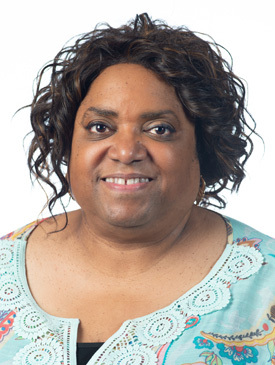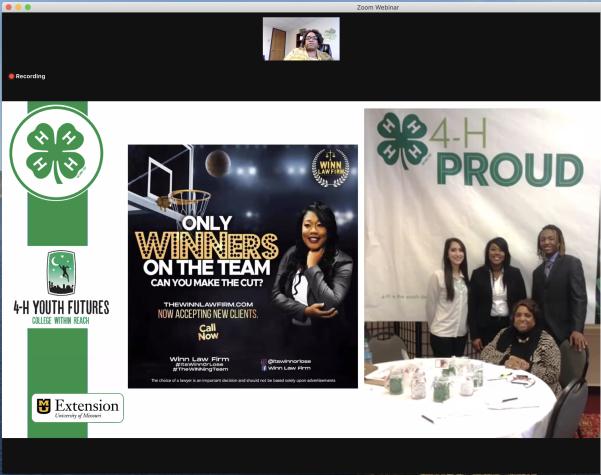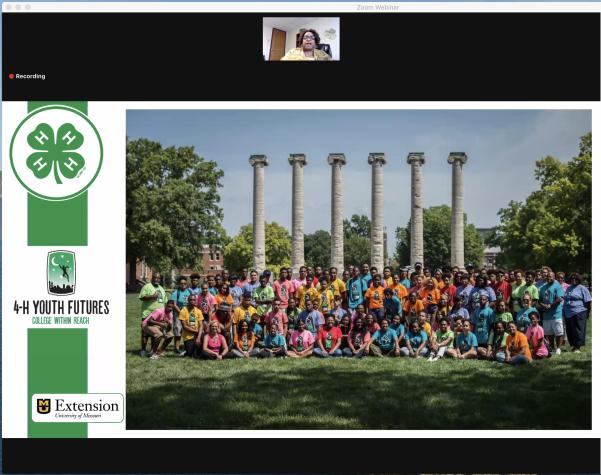Other states are adopting the Youth Futures college and career readiness program.
Writer
Curt WohleberST. LOUIS, Mo. – “They were the students who were not supposed to make it,” says Donna Garcia.
They are young people with the potential to become top scholars and leaders in their communities, but they face obstacles that might make success seem forever out of reach, says Garcia, University of Missouri Extension state 4-H specialist for college and career readiness.
Garcia is director of Missouri 4-H’s Youth Futures: College Within Reach, a program designed help vulnerable and underserved high school students work past those obstacles. Through ongoing mentoring and an annual conference, Youth Futures makes college an attainable goal for high school youths who are not typically encouraged to attend college, she says.

Donna Garcia
Youth Futures has made Missouri 4-H a leader in college and career preparation, with more than half a dozen other states adopting the program. On Oct. 28 the program received the 2020 National Extension Diversity Award, presented jointly by the USDA National Institute of Food and Agriculture, the Cooperative Extension System and the Association of Public and Land-grant Universities.
MU and Lincoln University extension educators launched Youth Futures in 2002, starting with 40 high school students in St. Louis and Kansas City. Many of the participants came from families with no firsthand college experience and attended “severe-needs” schools where most of the students qualified for free or reduced-price meals.
One of the founders of the program is Alison Copeland, currently the UM System’s deputy chief engagement officer. Copeland says one of the strengths of Youth Futures is that the program has consistently followed up with participants. “To show what was happening for everyone who experienced the program, we needed to capture what they went on to do.”
To date, Youth Futures has served more than 1,000 young people in Missouri. As of 2018, two-thirds of high school graduates who participated in the program were attending or had completed college. The growing set of longitudinal data demonstrating the program’s effectiveness has helped generate support and grant funding, Copeland says.
Garcia, who started working with Youth Futures in 2008, says there was some resistance to Youth Futures early on. “Comments were made that it was not a traditional 4-H program,” she says. “It was not a program that was grown out of rural Missouri. But as people started to see the results, they realized this was a good program.”
Youth Futures mainly operates through schools, though some sites are community-based, with meetings held at extension centers and other venues. “The program can look very different depending on what your needs are and where you are,” Garcia says. “The goals are the same. But if you are really meeting youth where they are, then you are going to construct that program to meet the needs of that audience.”
To learn more about students entering the program and their particular needs, Youth Futures added an essay requirement to the application process. Some of the insights were sobering. “We learned about the trauma so many of them experience on a regular basis and the responsibilities many have as substitute parents or secondary income providers while attending high school full-time,” she says.
Many financially struggling families don’t realize of the variety of aid opportunities that can make college affordable for them. But even the process of seeking that aid can be daunting. For example, there’s the Free Application for Federal Student Aid (FAFSA) form, which can be notoriously difficult to complete. Garcia, who has graduate degrees in education and computer science, found herself struggling with the form when her children were applying to college. “One time I had to call my accountant,” she says. “But not everybody can call an accountant. That, to me, was an eye-opener.”
The highlight of Youth Futures is an annual conference at the MU and Lincoln University campuses. In addition to workshops, tours and presentations, the conference gives students a taste of college life. Presenters at the conference have included corporate CEOs, National 4-H leaders and representatives from the federal Office of Juvenile Justice and Delinquency Prevention, which supports Youth Futures through the National 4-H Mentoring Program. (As with many events this year, the 2020 conference took place online.)
For 2020-21, Missouri 4-H is placing a stronger emphasis on college and career readiness throughout its programs. 4-H faculty will devote 20% of their time with local youths to prepare them for life after high school and explore postsecondary opportunities, including trade schools, community colleges and four-year colleges.
“In 4-H you are automatically working on college and career readiness already,” Garcia noted. “It’s not anything you have to do ‘in addition to.’ You just have to figure out how to weave it into what you’re already doing.”
For example, during a cooking project a 4-H specialist or volunteer leader might ask the kids if any of them considered cooking as a career. “If you think you might like that, let’s look at what needs to happen to reach that goal,” she says. “Let’s look at being a chef. Let’s look at being a restaurant owner. What steps do I need to take? Do I need to go to a two-year college? Do I need to go to a four-year college? Do I need to major in culinary arts? Do I need to major in business?”
New programs related to college and career readiness include a six-lesson SPIN (special interest) club that will be available to all Missouri youths this fall. Next fall, Missouri 4-H will launch Juntos 4-H, for Latinx youths grades 8-12.


